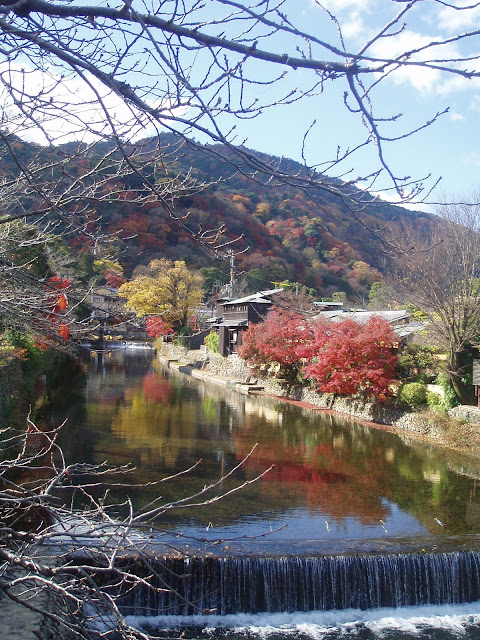 |
| Automn Leaves-Kobe |
In a day like today, four months ago, I made it safe from my country to Japan carrying more than 20 kg of in my hands and tons of stereotypes in my mind. Since then, I have met tens of people, watched many documentaries, observed around me and read a lot of article. Thanks to all of this I was able to recycle all the misconceptions I had in mind and tried to draw a more accurate image of Japan. I have also learned not to view Japan as a mass but instead view it as a big image divided into many pixels, in a way the sum of all the pixels represents real Japan.
 |
| A view from Arashiyama |
From these thousand of pixels, I have chosen some that I am going to discuss in this post. This are the things I didn't know initially and that played a major role correcting my previously stated misconceptions. I believe that the things I am listing here and that impressed me and helped me build a new image about Japan are relative in a way that my background plays a role in what I consider "different". Different people might have different experiences as they have different background.
The first thing I noticed since I came to Japan was the high literacy rate. People in different walk of life are literate. Seeing a grandmother reading a newspaper in the train is not unusual. This sound weird to me as the literacy rate in where I came from is less that 50%.Therefore, I strongly believe that literacy has greatly helped the exponential economic and social development Japan has known.
The second thing I would like to discuss is the strong link between Japanese people and nature. Some might relate it to the Shinto background that is predominant it Japan but still it is awesome how the Japanese people care about nature. Since I came to Japan, we had two days off for nature-related events. Two weeks ago I went to watch the tree leaves changing their color. This is something I do for the first time. In Morocco, there is no special day dedicated to watching the tree leaves or any kind of nature-related event. I was impressed when I went to Arashiyama by the number of people coming there to enjoy seeing nature.
 |
| Kobe by night |
The third thing I think that is good to mention is how Japanese are attracted by western culture. A brief section in "The Japanese Version" discusses the variety of odd expressions English found in Japan, also known as Japanglish. This is a phenomenon immediately apparent to an English-speaking visitor confronted with expressions ("Store My Ducks", "I feel Coke", "Good Notebook for Vegetarian") that appear to make no sense. Let's Sport", "Let's Healthy"are very common expression that one might fight anywhere.
The fourth thing me and my friends noticed what that the Japanese women became mums quite early. We met several times young couples in their late twenties having children. This seemed quite normal for me as it is not very different from where I came from however, my American and French friends found this unusual. This explains somehow that even though Japan is getting developed, the gender roles are still the same. Therefore, even thought a women receives good education and occupies a very good Job, fulfilling her social role by getting married and having children is still a priority.
 |
| A train car reserved for women during rush hours |
The list is still long. I strongly believe that the different movies and discussions we had in visual anthropology class strongly participated in helping me have a better visualization of Japan.
To conclude, I think that the best thing about knowledge is transferability. Now that I now that the stereotypes I had about Japan are completely inaccurate, I should get rid of all the misconceptions I have about different parts of the word. I should not take anymore the documentaries as source of information without being critical toward their purpose and targeted audience. All in all, I hope that our blogs will help people interested about Japan have a closer image of the country and the people.




